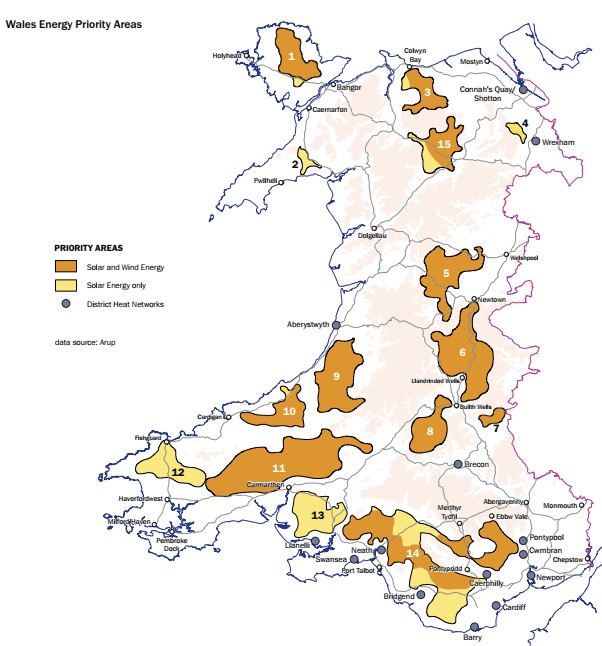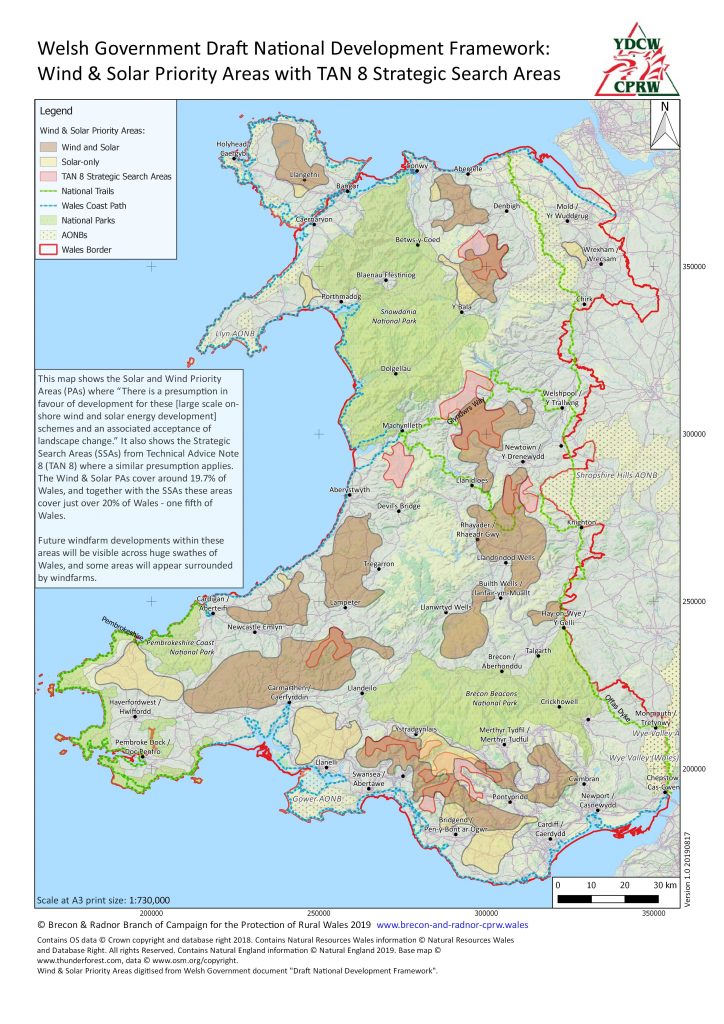INTENSIVE FARMING IN WALES IN A POST COVID 19 WORLD
At the time of writing, in early April 2020, viral pandemic is sweeping the world with devastating impact. The strengths and weaknesses of our societies and political institutions are being laid bare, and we hope it’s not naïve to hope that alongside the work of recovery, when this is all over, there will be a long overdue reappraisal of political priorities. This article looks at just one hugely important mid Wales issue, central to CPRW’s remit.
CPRW Brecon & Radnor has long opposed Welsh Government’s uncritical support for intensive livestock farming, and the lack of effective environmental regulation. Our campaign has, till now, focussed on the environmental costs: ammonia and phosphate pollution, habitat degradation, harms to ancient woodlands, amenity and landscape, damage to soils, increasing volumes of traffic and health risks to close neighbours. By contrast government’s focus has rested solely on economic benefit to the farmer, though without taking into account economic fallout for other local businesses, such as tourism enterprises. Nor the demotion of independent Welsh farmers to contractors for profit-driven multinational corporations. The branch has been active in mapping the extent of the intensive poultry industry in Powys, and in discussing concerns with the local authority and Natural Resources Wales (1). The branch is also involved in the WG working group looking at planning guidance for new developments, and has, through the WG Petitions Committee, put concerns to Welsh ministers, though without having yet received any adequate response. Health risks associated with intensive livestock farming haven’t to date been a major focus of the campaign.
But there is scientific consensus that the health risks of intensive livestock farming are serious, and Covid 19 is a sharp and tragic reminder of the dangers of prioritising short term economic benefits at the expense of human, animal and environmental health. Though we don’t know yet exactly how the Covid 19 virus passed to humans, it seems almost certain that the virus originated in wild bat populations. It is not the first animal virus to have jumped to humans, just the first, in the last hundred years at least, to have such global reach. Since the intensive model of livestock farming emerged from the US in the post war decades, the frequency of such outbreaks has increased (2). While there has not been another bird flu pandemic since 1918, in recent decades there have been frequent bird flu outbreaks and the more dangerous strains are considered a potential pandemic threat.
We are not off the hook because we don’t, in Wales, have an equivalent of the ‘wet markets’ of the Far East. Intensive poultry units are near perfect incubators for viruses, providing regularly replenished populations of weakened, immune compromised, and genetically similar hosts. A concentration of intensive livestock units within a geographical area heightens the risks (3). Powys is now home to approaching 10 million poultry, housed on several hundred farms across the county, the majority of them below the threshold for environmental permit (4). Intensive pig farms, many of them under the planning radar, have also now arrived in Powys, sometimes on sites adjacent to intensive poultry units. Pigs, being susceptible to both bird and human flu viruses, can provide the perfect intermediary host for a bird flu virus to become an effective human pathogen.
The expansion of the intensive livestock model across the globe and associated pollution has caused widespread environmental degradation. And mouths need feeding: huge swathes of natural habitat have been destroyed to create farmland for the growing of feedcrops (5). This degradation and loss of habitat forces wild animal and bird populations into ever closer contact with humans, creating further opportunities for infection. Research also suggests that reduced biodiversity and ecosystem damage has the potential to increase disease transmission and emergence of new pathogens (6).
The last few days alone have seen outbreaks of swine fever, with the potential to transmit to humans, in western Poland (7) and in Gansu and Shanxii provinces in northern China (8), and highly pathogenic bird flu in a turkey flock in South Carolina (9).
At the same time intensive livestock farming poses the risk of increasing immunity to known antibiotics, essential to modern medicine. Routine use of low doses of antibiotics to compensate for husbandry and genetic deficiencies are one of the causes of an increase in resistant bacteria, and, alarmingly, exposure to one particular antibiotic can enable bacteria to establish immunity not only to that drug but to a raft of others as well.
This article doesn’t touch on issues of food security, resilience of supply and just reward for farmers, which recent weeks have shown also need urgent attention. But on grounds of the health risks alone, it is time surely for a radical rethink about the kind of farming Welsh Government wants to support, and the urgent prioritisation of the protection of our environment and biodiversity.
Notes: (1) www.brecon-and-radnor-cprw.wales (2) Among them Ebola (1976), HIV (1981), SARS (2003), MERS (2012), Nipah (2018), multiple outbreaks of various strains of bird flu, swine fever and now Covid 19. Years are years of first identification or first case of human infection. (3) See ‘The Role of Intensive Poultry Industry in the Spread of Avian Influenza’ CIWF 2007 (4) Welsh Government official statistics give the number of poultry in the Whole of Wales, in June 2018, as 10 million, suggesting that government has no idea of the scale of the industry across the country. (5) The calorific value of feedcrops is several multiples that of the meat or eggs produced. Intensive livestock farming cannot make a positive contribution to feeding the world’s growing population. (6) ‘Impacts of biodiversity on the emergence and transmission of infectious diseases’ Keesing, Belden et al. (Nature 468). (7) Guardian 8th April 2020 https://www.theguardian.com/environment/2020/apr/08/african-swine-fever-outbreak-reported-in-western-poland?fbclid=IwAR3nGgrq6rZTONGN82pR97sSLwGHAJ-ngQVIk-0qcpXR5EZPc-PTb_s_WJM (8) Reuters 13th April 2020 https://www.reuters.com/article/china-swinefever/china-reports-african-swine-fever-cases-in-gansu-shaanxi-provinces-idUSL3N2C10R0 (9) PBS News Hour 10th April 2020 https://www.pbs.org/newshour/health/industry-scrambles-to-stop-fatal-bird-flu-in-south-carolina

